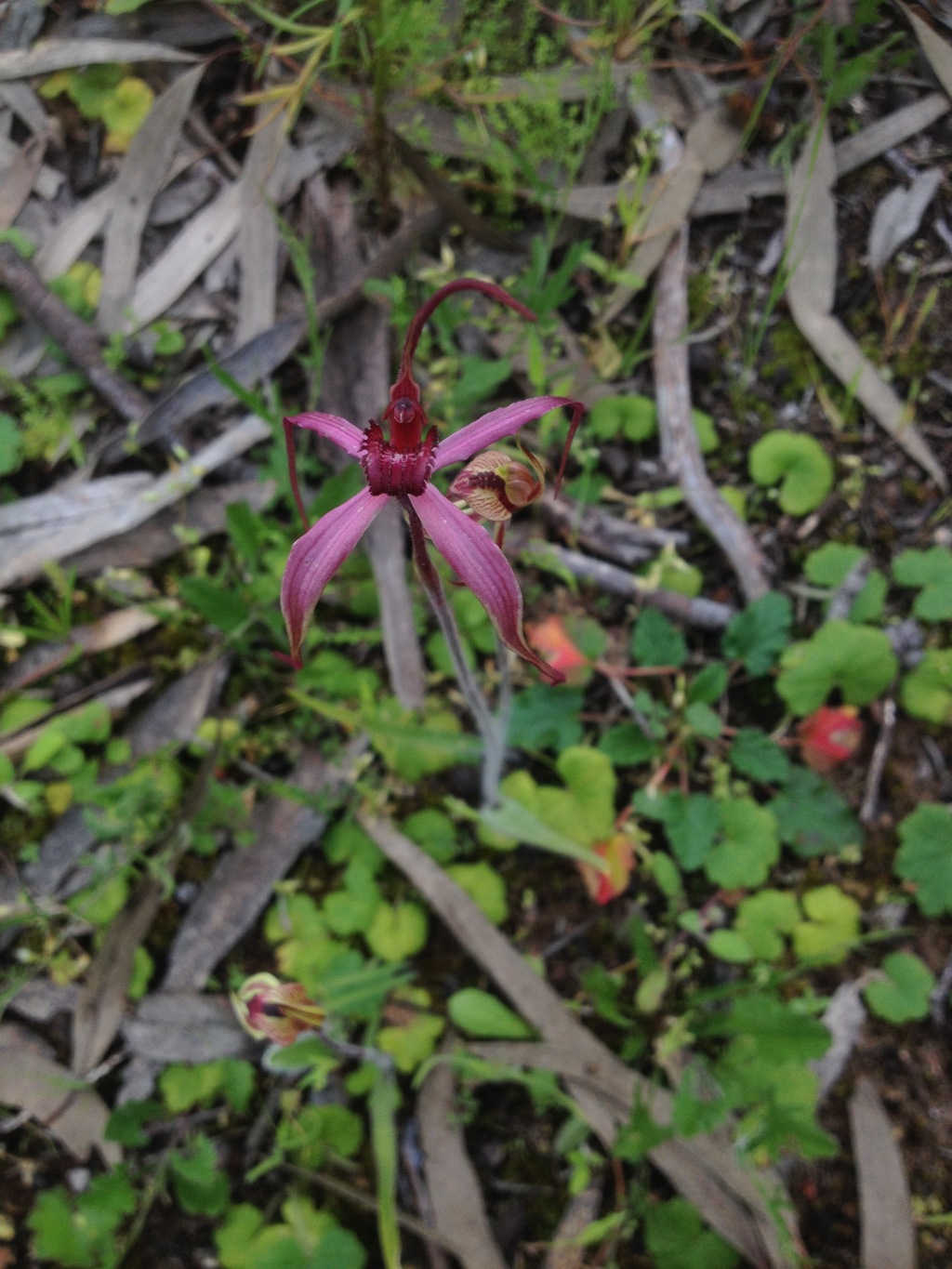Caladenia formosa
G.W.CarrFlowering plant 20–60 cm tall. Leaf 8–15 cm long, 5–12 mm wide. Flower usually solitary, sometimes 2; perianth segments 4–8 cm long, pinkish-red to deep blood red; sepals flattened at base, 2–6 mm wide, tapered to a long tail densely covered in crowded, elongate glands and glandular hairs; petals shorter than sepals but otherwise similar. Labellum curved forward with apex recurved and lateral lobes erect, lamina ovate-cordate, very obscurely 3-lobed, 15–20 mm long and 9–12 mm wide (when flattened), blood red; margins of lateral lobes fringed with linear calli to 2 mm long; margins of mid-lobe with shorter calli becoming toothlike and broader towards tip; lamina calli in 4 or 6 rows, extending almost to tip, foot-shaped, to 1.5 mm long at base of lamina, decreasing in size towards apex. Flowers Sep.–Oct.
Wim, GleP, GipP, Gold, GGr, DunT, NIS. Also SA. Apparently restricted to south-west Victoria near Dergholm (type locality), where occurring in open woodland in sandy soil.
Similar to C. concolor, but with larger, brighter, blood-red flowers and the labellum margins toothed all the way to the apex.
Caladenia formosa hybridizes with C. venusta at the type locality.
Entwisle, T.J. (1994). Orchidaceae. In: Walsh, N.G.; Entwisle, T.J., Flora of Victoria Vol. 2, Ferns and Allied Plants, Conifers and Monocotyledons, pp. 740–901. Inkata Press, Melbourne.
 Spinning
Spinning

